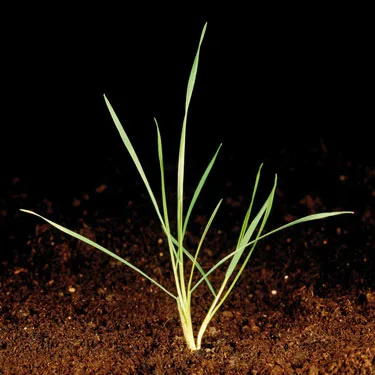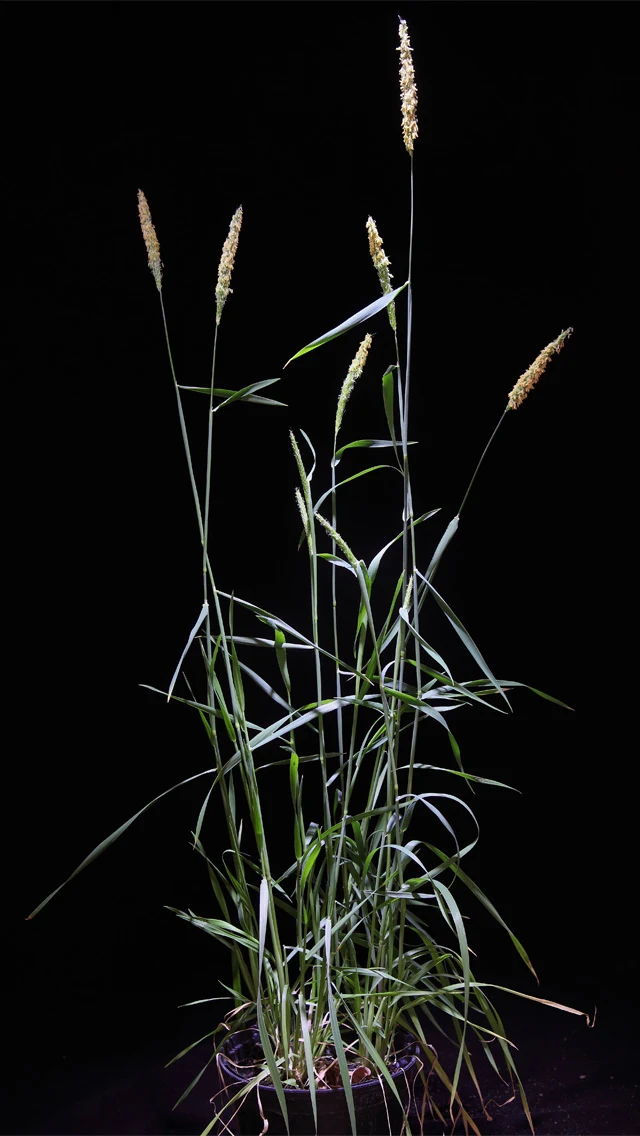
Black-grass
Alopecurus myosuroides

Alopecurus myosuroides
Auricles
Absent.
Importance
Black-grass thrives on heavy land, particularly where drainage is poor. On light land it is a problem on wetter areas. About 80% of seeds germinates in the autumn. Hot, dry summers see strong early autumn-germination; cool wet autumns see increased dormancy and delayed germination. Increasingly a major problem throughout England and worsening through herbicide resistance.
Leaf blade
Bluish-green, short, flat and hairless. Usually rough with well-defined keel and usually rolled.
Ligule

Medium: 2.5 mm. Blunt and finely serrated.
Description
Tall erect annual. Compact flower spike 3 - 13 cm; narrow and pointed, often tinted purple. Seedling leaf sheath often purple.


Lifecycle:
About 80% of shed black-grass seed germinates in the autumn and consequently it is mainly a problem in winter crops. Under wet and saturated conditions, dormancy can remain unbroken until the spring when further germinations affect early sown spring crops.
The bulk of black-grass seed only survives in the soil for two years, serious infestations generally being associated with intensive winter cropping – winter wheat and barley and winter beans.
Management:
Controlling black-grass is a year-round task, requiring cultural and chemical controls.
Identify problem areas:
June and July are the best times to check black-grass populations and plan your control programme.
Black-grass plants are visible above the crop canopy, so you can take the time to note black-grass hotspots and count the number of plants per square metre. This, combined with testing seed for herbicide resistance gives you an idea of the extent of the black-grass problem and how to tackle it.
Immediate steps include patch spraying, hand-rogueing and harvest weed seed management. Looking further ahead, there is the opportunity to plan crop rotation, cultivation and establishment for the coming season.
For a more detailed blueprint on how to manage black-grass, read our detailed guide, Black-grass: The definitive Resource

Black-grass ligule

Black-grass ligule

Black-grass flower head. Photo © Nigel Cattlin/FLPA

Black grass © Blackthorn arable.

Black grass © Blackthorn arable.

Black grass © Blackthorn arable.

Black grass © Blackthorn arable.


